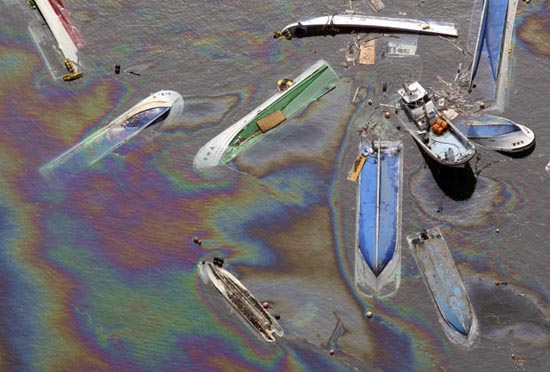Earthquake caused tsunami warning, radioactivity index was adjusted
This morning, a magnitude 6.5 earthquake shook the east, prompting Japan to issue a tsunami warning. Earlier, Fukushima I factory manager apologized for 'misread' the radioactivity increased by 10 million times at the No. 2 oven.

Officials said they did not know where the radioactive water came from . Photo telegraph
According to the US Geological Survey, the earthquake occurred at 723 am (Japanese time), near the east coast of Honshu, at a depth of 5.9 km. Meanwhile, the Japanese meteorological agency said the earthquake has a richter 6.1 intensity.
There has been no information on the number of casualties and casualties, and a half-meter tsunami warning could hit Miyagi Prefecture, which was previously lifted by the Japan Meteorological Agency.
Meanwhile, Japan's devastating nuclear plant manager Fukushima I apologized for " negligence " when he reported a 10 million-fold increase in radiation levels in one of the reactors. often.
Tokyo Electric Power Company (TEPCO) announced that the latest measured radioactivity at the plant was devastated by earthquakes and tsunamis 100,000 times higher than normal, which is much lower than the previous report. yesterday.
The new indexes measured just hours after an inaccurate report stated that the radioactivity level is 10 million times the acceptable normal level in the amount of water accumulated in the turbine storage area of the reactor. No. 2 at Fukushima I. Because this level is too high, the index worker has to withdraw before confirming the index by measuring it again.
A spokesman for Japan's Nuclear Surveillance Agency, Hidehiko Nishiyama, said the radiation levels in puddles near the No. 2 furnace were confirmed at 1,000 millisievert an hour. ' This is an extremely high number ,' said Nishiyama.
The risk of cancer occurs when exposed to 100 millisieverst of radiation a year.
Earlier, the Japan Atomic Energy Agency said that the level of radioactive iodine in the sea area near the plant had risen above the normal level of 1,850 times.
Misleading measurements have forced employees to flee the reactor, located 240 kilometers north of Tokyo, while also demonstrating more challenging challenges for several hundred struggling workers to provide. Accurate information for the public has just made an effort to restart the plant's cooling system. In some cases, workers had to conduct extremely sensitive electrical tests in the dark, under the conditions described as extremely difficult.
Efforts are underway to find ways to drain many stagnant puddles containing high levels of radiation, accumulating in reactor-containing buildings, after two employees were hospitalized for radiation-induced burns. out, after stepping into a pool of contaminated water.
Officials said they did not know where the radioactive water came from.
Chief of Japan's Cabinet Office Yukio Edano, the Japanese government's chief spokesman for nuclear disaster, said on TV programs that contaminated water ' almost certainly ' leaked from the core of the reactor. application.
The UN Atomic Energy Agency (IAEA) has warned that the crisis will last for months.
So far, the number of deaths in the March 11 disaster has exceeded 10,000 and more than 17,440 others are still considered missing.
- The magnitude 8.2 earthquake in chile: The tsunami threatens many countries
- 3D graphics simulate stratigraphic collisions causing earthquakes
- 7.6-magnitude earthquake in New Caledonia, a tsunami warning of 3m high
- Earthquake of 8 Richter scale in Chile, tsunami warning
- Earthquake of 7.4 on Richter caused tsunami warning in the US
- The 7.3-magnitude earthquake caused a small tsunami in Japan
- Indonesia earthquake strong, at least 18 people died
- Why is the Indonesian tsunami warning not activated?
- Indonesia issued a tsunami warning after the earthquake
- Develop tsunami warning method by GPS
- Earthquake triggers tsunami warning in Japan
- Earthquakes followed the tsunami warning in New Zealand
 Is the magnetic North Pole shift dangerous to humanity?
Is the magnetic North Pole shift dangerous to humanity? Washington legalizes the recycling of human bodies into fertilizer
Washington legalizes the recycling of human bodies into fertilizer Lightning stone - the mysterious guest
Lightning stone - the mysterious guest Stunned by the mysterious sunset, strange appearance
Stunned by the mysterious sunset, strange appearance